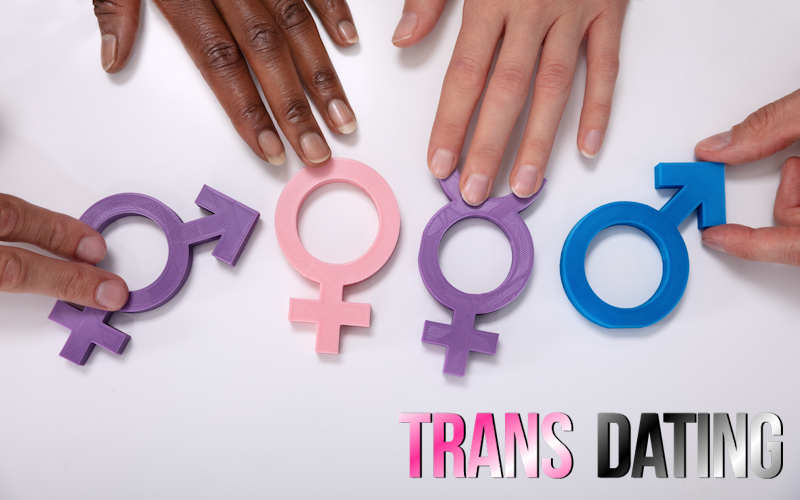In recent years, conversations surrounding gender identity have become more prominent, leading to a broader awareness and understanding of the diverse experiences within the LGBTQ+ community. Among these discussions, the terms “transgender” and “transsexual” often emerge, sometimes used interchangeably, yet they signify different experiences and identities. This article aims to elucidate the distinction between these two terms, providing clarity on their meanings, implications, and the importance of using language respectfully and accurately.

The Evolution of Language
Language evolves with society’s understanding of gender and identity. The terms “transgender” and “transsexual” have histories that reflect changing perceptions and increased awareness of gender diversity. It’s crucial to recognize that language can deeply impact individuals’ experiences, particularly in how they are seen and understood by society.
Transgender: An Umbrella Term
“Transgender” is a broad term that encompasses a wide range of gender identities and experiences. It refers to individuals whose gender identity differs from the sex they were assigned at birth. Transgender people may identify as male, female, both, neither, or somewhere along the gender spectrum, challenging traditional binary notions of gender.
The term “transgender” focuses on gender identity rather than the physical aspects of transition. It acknowledges the diverse ways in which individuals may understand and express their gender, which may or may not include medical interventions such as hormone therapy or surgery.
Transsexual: A Specific Experience
“Transsexual,” a term that has fallen out of favor in recent years due to its medical and pathologizing connotations, historically referred to individuals who undergo medical interventions, such as hormone therapy or gender-affirming surgeries, to align their physical bodies with their gender identity. The term was more commonly used in medical and psychiatric contexts, emphasizing the aspect of physical transition.
It’s important to note that not all transgender people identify as transsexual, and not all those who might fit the historical definition of transsexual identify with the term. Many prefer “transgender” as a less clinical and more inclusive term that focuses on gender identity rather than the process of medical transition.

The Significance of Self-Identification
Self-identification is a fundamental aspect of understanding and respecting gender diversity. Individuals should have the autonomy to choose the terms that best reflect their experiences and identities. This respect for personal identification underscores the importance of using language that individuals prefer, fostering an environment of acceptance and inclusivity.
Respecting Preferred Terms
When discussing or addressing matters of gender identity, it’s essential to use the terms and pronouns that individuals prefer. This practice affirms their identity and respects their journey. If uncertain about which terms or pronouns to use, politely asking the individual is a respectful approach.
The Role of Language in Inclusivity
Language plays a pivotal role in inclusivity and representation. Using accurate and preferred terms can help create a more welcoming and understanding society, reducing stigma and discrimination against transgender and gender-diverse individuals.

Understanding Gender Diversity
Understanding the distinction between “transgender” and “transsexual” is part of a broader effort to recognize and appreciate the complexity of gender diversity. Gender is a multifaceted aspect of identity, influenced by a combination of personal identification, cultural factors, and social experiences.
The Gender Spectrum
The concept of the gender spectrum acknowledges that gender exists beyond the binary categories of male and female. This perspective allows for a more nuanced understanding of gender, recognizing the variety of ways people experience and express their gender identities.
The Importance of Support and Acceptance
For transgender individuals, support and acceptance from family, friends, and society are crucial for well-being and mental health. Affirmation of one’s gender identity through respectful language and actions can significantly impact an individual’s quality of life and sense of belonging.

Challenges and Misconceptions
Despite increasing awareness, transgender and gender-diverse individuals often face challenges and misconceptions. Misunderstanding the difference between terms like “transgender” and “transsexual” can contribute to these challenges, underscoring the need for continued education and dialogue.
Combating Stereotypes and Stigma
Stereotypes and stigma surrounding transgender identities can lead to discrimination, exclusion, and harm. It’s essential to challenge these negative perceptions by promoting understanding, empathy, and respect for all individuals, regardless of their gender identity.
The Role of Allies
Allies play a significant role in supporting transgender and gender-diverse individuals. By educating themselves, using respectful language, and standing against discrimination, allies can contribute to a more inclusive and accepting society.
The distinction between “transgender” and “transsexual” highlights the complexity and diversity of gender experiences. “Transgender” serves as an inclusive term that encompasses a wide range of gender identities, while “transsexual” historically referred to those who undergo medical transitions, though its use has declined in favor of more inclusive language.



